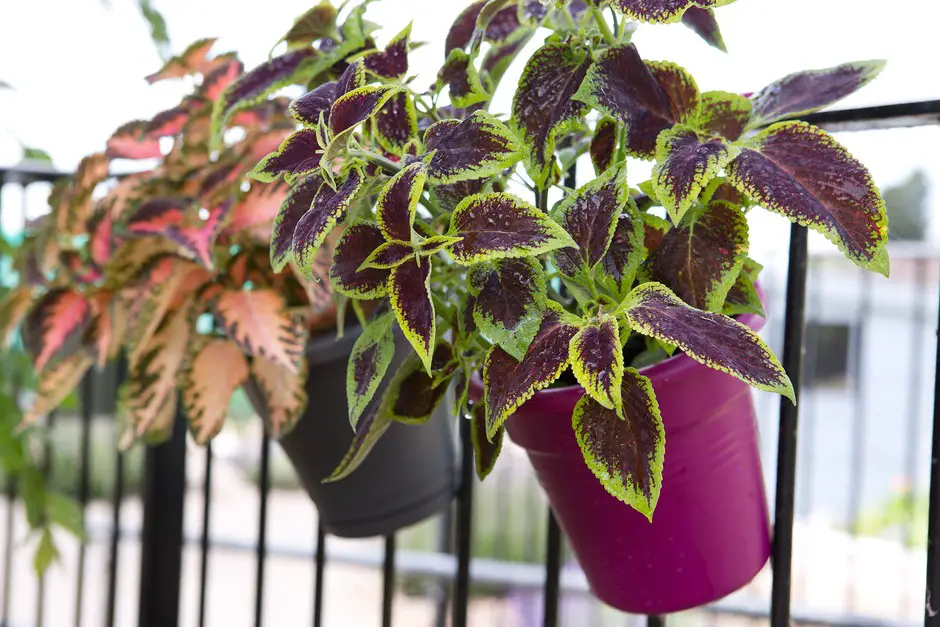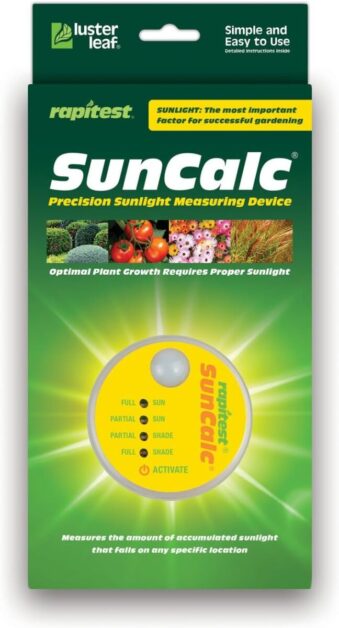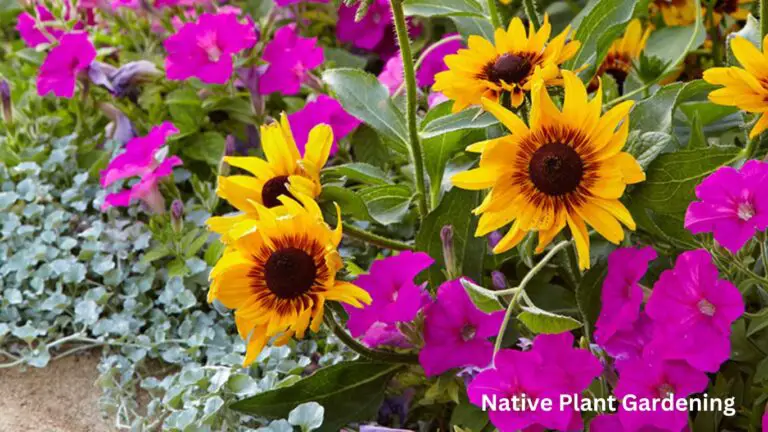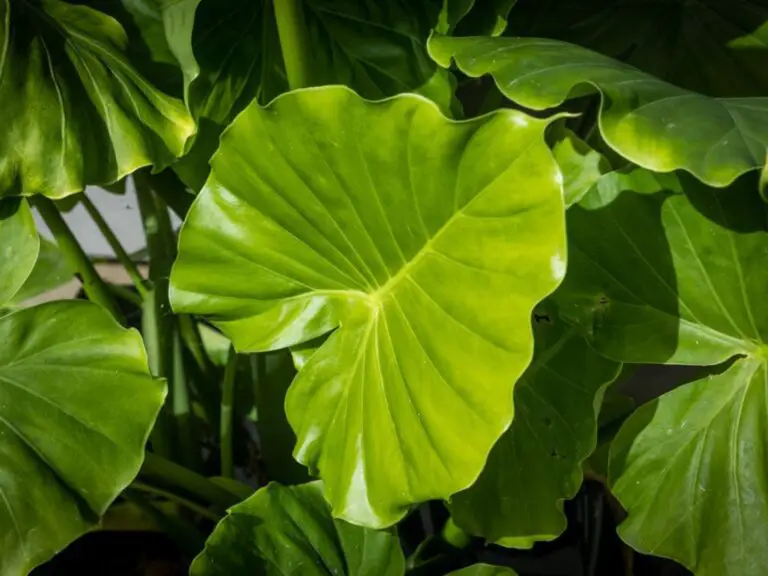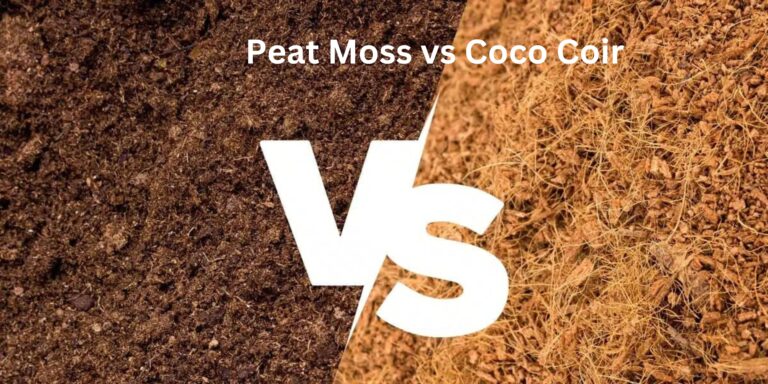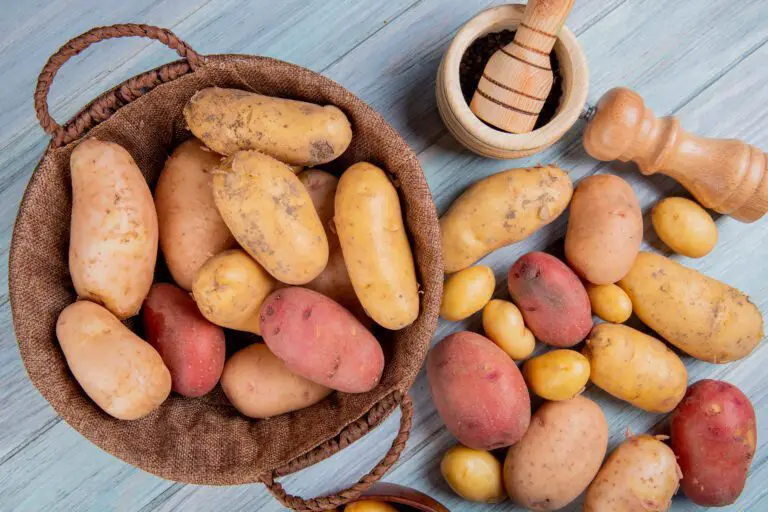Coleus: Planting, Growing, and Caring
Are you ready to add a pop of vibrant color and unique patterns to your garden or indoor space? Enter the world of coleus, a stunning plant known for its dazzling foliage and easy-care nature. With a wide range of colors and leaf shapes available, coleus plants offer endless possibilities for creating eye-catching displays. From planting and growing to caring for these beauties, mastering the art of coleus cultivation is a delightful journey for any plant enthusiast. Join us as we explore the ins and outs of planting, growing, and caring for coleus, sharing expert tips and tricks to help you nurture these botanical gems with confidence. Get ready to elevate your green space with the captivating beauty of coleus!
Table of Contents
Understanding the Coleus Plant: A Guide for Gardeners
:strip_icc()/how-to-care-for-coleus-a949c0ad44ef4da6b294183b8192d1b3.jpg)
The Coleus plant, also known by its scientific name Coleus scutellarioides, is a stunning foliage plant that has captivated gardeners around the world.
- Colorful Foliage: Coleus boasts vibrant leaves in a wide spectrum of colors, including deep purples, greens, bright pinks, and oranges. These eye-catching hues instantly elevate any garden or landscape.
- Variety: With over 700 cultivars, Coleus offers an extensive range of options. Each cultivar has its own unique leaf shape, size, and color combination. Whether you prefer bold patterns or subtle elegance, there’s a Coleus for you.
- Adaptability:
- Sun and Shade: Coleus thrives in both sun-filled areas and shady corners. It’s a versatile plant that can adapt to various light conditions.
- Indoor and Outdoor: You can grow Coleus indoors to add elegance to your living spaces or plant it outdoors to brighten up gardens and containers.
- Low Maintenance: Despite its stunning appearance, Coleus is surprisingly low-maintenance. It’s an excellent choice for both seasoned gardeners and beginners.
- Watering: Keep the soil consistently moist but not waterlogged.
- Soil: Use rich, loose, and well-draining soil. Consider adding compost or organic material before planting.
- Light: Coleus prefers filtered morning sun and shade in the afternoon. Too much direct sun can cause leaf scorching and fading.
- Temperature: Ideal temperatures are above 60°F (15°C) in summer and around 50°F (10°C) in winter.
- Humidity: Coleus enjoys high humidity, so placing it in a naturally humid room (like the kitchen or bathroom) is beneficial.
- Annual Growth: When planted outdoors in early spring, Coleus quickly spreads and reaches full size within a single season. Large swaths of assorted Coleus create a quilt-like appearance in landscapes and garden beds.
- Toxicity: Be aware that Coleus is toxic to pets, so keep it out of their reach.
With proper care and attention, this plant will reward you with its stunning foliage and add an element of beauty to your garden that is hard to ignore. So, if you are looking to add a splash of color to your garden or want to experiment with different foliage patterns, the Coleus plant is a fantastic choice that is sure to impress.
As a user of the Luster Leaf 1875 Rapitest Suncalc Sunlight Calculator, I found it to be a helpful tool for assessing the sunlight conditions in my garden. Placing the device in various locations allowed me to accurately measure Photosynthetically Active Radiation (PAR) light, which is essential for plant growth and photosynthesis. By following the instructions provided, I was able to determine the suitability of different areas for various types of plants, whether they required full sun, partial sun, partial shade, or full shade.
I appreciate the convenience and insights offered by the Luster Leaf 1875 Rapitest Suncalc Sunlight Calculator in planning my garden layout. It serves as a useful tool for gardeners seeking to optimize plant growth by ensuring they are placed in environments conducive to their sunlight requirements.
✅ Optimized Plant Placement: By using the SunCalc, gardeners can determine the amount of accumulated PAR light in a specific garden location over 12 hours. This information enables them to place their plants in optimal light conditions according to their specific light requirements.
✅ Easy to Use: The device is user-friendly, requiring only placement in the desired location and activation. After 12 hours, users can return to read the results, making it convenient for gardening planning.
✅ Long-Lasting Battery: The SunCalc comes with a long-lasting battery included, ensuring continuous use without frequent battery replacements.
✅ Helps Avoid Plant Stress: By providing accurate sunlight measurements, the SunCalc helps gardeners avoid placing plants in locations with inadequate or excessive sunlight, thus reducing the risk of plant stress or poor growth.
❌ Weather Dependency: The device’s effectiveness is dependent on weather conditions, as it requires a full day of sunlight to provide accurate readings. Cloudy or rainy days may hinder its usability.
❌ Durability Concerns: Some customers have reported issues with the device’s durability, mentioning issues with the battery and overall reliability. There are also concerns about its waterproofness, with reports of moisture entering the device in wet conditions.
❌ Potential Accuracy Variations: While the device aims to provide accurate sunlight measurements, there may be variations in readings based on factors such as placement, calibration, and environmental conditions.
❌ Limited Warranty: The warranty and support for the SunCalc may be limited, as some customers have expressed dissatisfaction with the company’s responsiveness to inquiries or concerns regarding the product.
The Fascinating History of Coleus: From Ancient Origins to Modern Varieties
The history of the coleus plant is a truly fascinating journey that spans across ancient civilizations to the incredibly diverse range of modern varieties we see today. Dating back thousands of years, coleus has been cherished for its vibrant foliage and has played a significant role in various cultures.
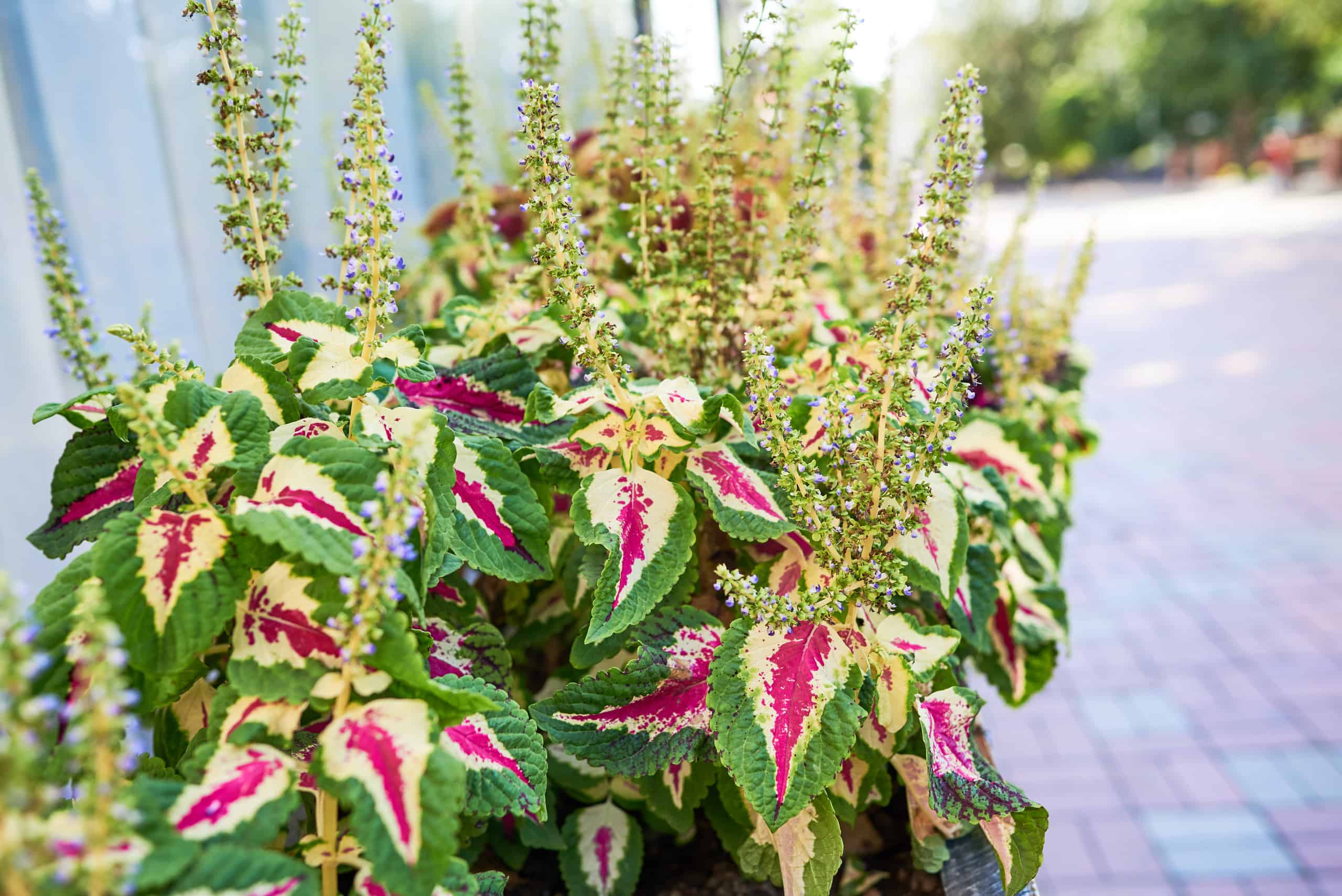
Ancient Civilizations’ Appreciation:
- Egyptians and Greeks valued coleus for its vibrant foliage, incorporating it into their gardens and ornamental displays.
- The plant’s striking leaves and intricate patterns captivated botanists and horticulturists, leading to detailed studies of its species and characteristics.
19th Century Surge in Popularity:
- Explorers and plant collectors introduced new coleus specimens from tropical regions, enriching the plant’s genetic diversity.
- This influx sparked a wave of interest among enthusiasts, resulting in the development of hybridization programs.
- Breeders meticulously crossed different coleus varieties to create unique and stunning cultivars that adorn modern gardens.
Continuous Evolution:
- The history of coleus showcases humanity’s deep appreciation for nature and our constant quest to enhance the beauty of our surroundings.
- From ancient times to the present day, coleus has evolved, captivating gardeners worldwide with its diverse foliage and endless possibilities.
The history of coleus is an incredible testament to humanity’s appreciation for the natural world and our relentless desire to explore and enhance the beauty of our surroundings. From its humble beginnings in ancient times to the continuous development of modern varieties, coleus has captured the hearts of gardeners around the world with its unrivaled foliage and endless possibilities.
Selecting the Perfect Location for Your Coleus Garden
When selecting the perfect location for your coleus garden, it is important to consider several key factors that will contribute to the overall health and success of your plants.

Coleus loves partial shade to full sun. Aim for at least 4-6 hours of sunlight per day.
Sunlight is crucial for photosynthesis, which results in those vibrant, colorful leaves.
Prevent waterlogged roots by ensuring your soil drains well. Waterlogged roots can lead to root rot.
Test the soil pH and adjust it to the optimal range of 6.0 to 7.0.
Amend the soil with organic matter like compost or aged manure to improve drainage and provide nutrients.
Coleus behaves differently based on climate:
Colder Regions: Treat coleus as annuals (one-season plants).
Warmer Climates: They can be grown as perennials (returning year after year).
Microclimates: Observe local variations in temperature, wind, and humidity within your garden.
Wind Protection: Shield coleus from strong winds, as their delicate foliage can easily get damaged.
By carefully selecting the right location, you’ll create a vibrant and thriving display of colorful coleus foliage in your garden! 🌿🌞🍃
Soil Preparation: Creating an Ideal Environment for Coleus Growth
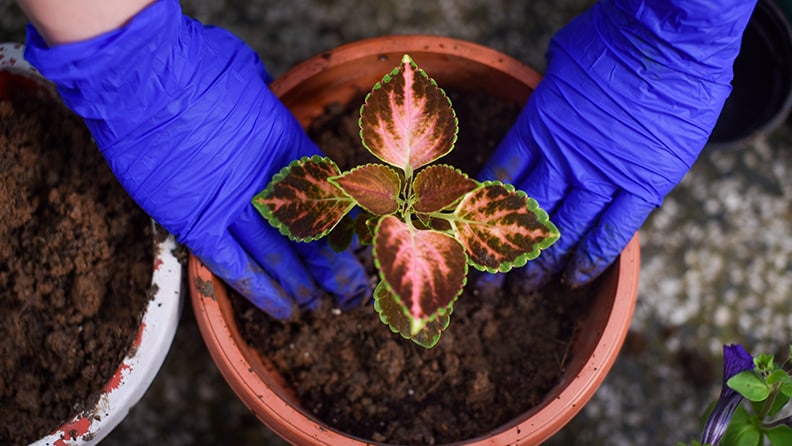
Preparing the soil is a crucial step in creating an ideal environment for the growth of coleus plants. By taking the time to properly prepare the soil, you can ensure that your coleus will thrive and produce vibrant foliage. To prepare the soil for optimal coleus growth:
- Test pH Level: Aim for a slightly acidic soil with a pH range of 6.0 to 6.8. Adjust pH if needed by adding elemental sulfur for high pH or lime for low pH.
- Improve Texture and Fertility: Ensure well-draining soil rich in organic matter. Incorporate compost or well-rotted manure to enhance nutrient content and soil structure.
- Enhance Root Development: Good soil structure aids root growth and water retention, crucial for coleus plants’ health and vibrancy.
- Balanced Fertilizer: Consider adding a balanced fertilizer before planting to provide essential nutrients for optimal coleus growth.
Propagation Methods: From Seeds to Cuttings
Propagation is an essential technique for gardeners to grow and expand their collection of coleus plants. There are two common methods for propagation: seeds and cuttings. Both techniques have their pros and cons, but ultimately, they offer exciting opportunities for gardeners to experiment and achieve success with their coleus plants.Let’s compare the propagation methods for Coleus plants using a differential table:
| Propagation Method | Description | Advantages | Disadvantages |
|---|---|---|---|
| Seeds | – Sow seeds directly in soil or seed-starting trays. | – Easy and cost-effective. | – Slower growth compared to cuttings. |
| – Germination time varies (usually 7-14 days). | – Allows for genetic diversity. | – May not retain exact characteristics of parent plant. | |
| – Transplant seedlings once they have several true leaves. | – Suitable for large-scale propagation. | – Requires patience during germination. | |
| Cuttings | – Take stem cuttings from mature Coleus plants. | – Faster results (rooting in 1-2 weeks). | – Requires access to mature plants for cuttings. |
| – Remove lower leaves and dip cut end in rooting hormone. | – Ensures propagation of exact plant characteristics. | – Initial investment in rooting hormone. | |
| – Place cuttings in well-draining soil or water until roots develop. | – Ideal for maintaining specific cultivars. | – Risk of rot if soil is too wet. | |
| – Maintain high humidity and indirect light during rooting. | – Suitable for indoor propagation. | – May need to pinch back to encourage bushier growth. | |
| Division | – Divide mature Coleus plants at the root ball. | – Instantly creates new plants. | – Requires established plants. |
| – Gently separate root clumps into individual sections. | – Retains parent plant characteristics. | – Disrupts root system and may cause transplant shock. | |
| – Replant divisions in separate containers or garden beds. | – Useful for rejuvenating overgrown plants. | – Timing matters (best done in spring or early summer). | |
| Leaf Cuttings | – Take healthy leaves with petioles (leaf stems). | – Can propagate multiple plants from a single leaf. | – Requires patience (slow root development). |
| – Remove lower leaves and insert petiole into soil or water. | – Suitable for small-scale propagation. | – Leaf cuttings may not retain exact leaf shape or color. | |
| – Keep soil consistently moist and provide indirect light. | – Great for experimenting with different leaf patterns. | – Risk of rot if soil is too wet. |
Remember that each method has its own advantages and limitations. Choose the one that best suits your preferences and available resources. Happy propagating! 🌱🌿
Choosing the Right Coleus Varieties for Your Garden
When it comes to choosing the right coleus varieties for your garden, there are a multitude of options available to suit various preferences and needs. With their vibrant foliage and stunning array of colors, coleus plants can add a touch of beauty and elegance to any space.

| Variety | Characteristics | Advantages | Disadvantages |
|---|---|---|---|
| ColorBlaze Golden Dreams | – Chartreuse leaves with red veins. – Heat-tolerant. – Grows 24-40 inches tall and 18 inches to 3 feet wide. | – Thrives in both sun and shade. – Adds vibrant color to gardens. – Suitable for containers. | – Requires afternoon shade in dry heat. – May need a large pot due to its height. |
| French Quarter | – Striking foliage with unique patterns. – Upright growth habit. | – Adds a dash of color among perennials. – Performs well in gardens. – Deer-resistant. | – May need to track down seeds or cuttings. |
| Pineapple | – Bright yellow-green leaves. – Compact growth. | – Ideal for mixed container combos. – Thrives in both sun and shade. – Low maintenance. | – Limited availability in some garden centers. |
| Black Prince | – Dark burgundy leaves. – Upright habit. | – Creates contrast in garden beds. – Suitable for full sun. – Deer-resistant. | – Requires well-drained soil to prevent root rot. |
| Inky Fingers | – Deeply lobed leaves resembling ink-stained fingers. – Compact growth. | – Adds texture and interest to the garden. – Performs well in containers. – Low maintenance. | – May need to order seeds or cuttings. |
| Kiwi Fern | – Chartreuse leaves with fern-like texture. – Trailing growth. | – Excellent for hanging baskets and window boxes. – Versatile for sun or shade. – Low maintenance. | – May require a larger container for trailing growth. |
| Wizard Mix | – Mix of striking colors: reds, pinks, purples, and yellows. – Compact size. | – Perfect for borders and containers. – Adds variety to garden displays. | – None reported. |
| Trailing Burgundy | – Cascading foliage in deep shades of burgundy. – Ideal for hanging baskets and window boxes. | – Dramatic flair for vertical displays. – Thrives in trailing positions. – Eye-catching. | – None reported. |
| Henna | – Bronzy-red foliage with delicate lime-green edges. – Subtle color palette. | – Adds warmth and sophistication. – Suitable for various garden styles. – Low-key elegance. | – None reported. |
| Kong Series | – Impressive leaves in vibrant shades of red, pink, and green. – Tall growth (up to three feet). | – Commanding presence in the garden. – Ideal for focal points. – Striking colors. | – May need space due to height. |
With the wide range of coleus varieties available, you can mix and match different colors and growth habits to create a truly unique and visually appealing garden. Consider factors such as sun exposure, soil conditions, and desired height when selecting the perfect coleus plants for your outdoor space.
The Art of Planting Coleus: Techniques for Success
Planting coleus requires careful attention to detail to ensure successful growth and optimal results.
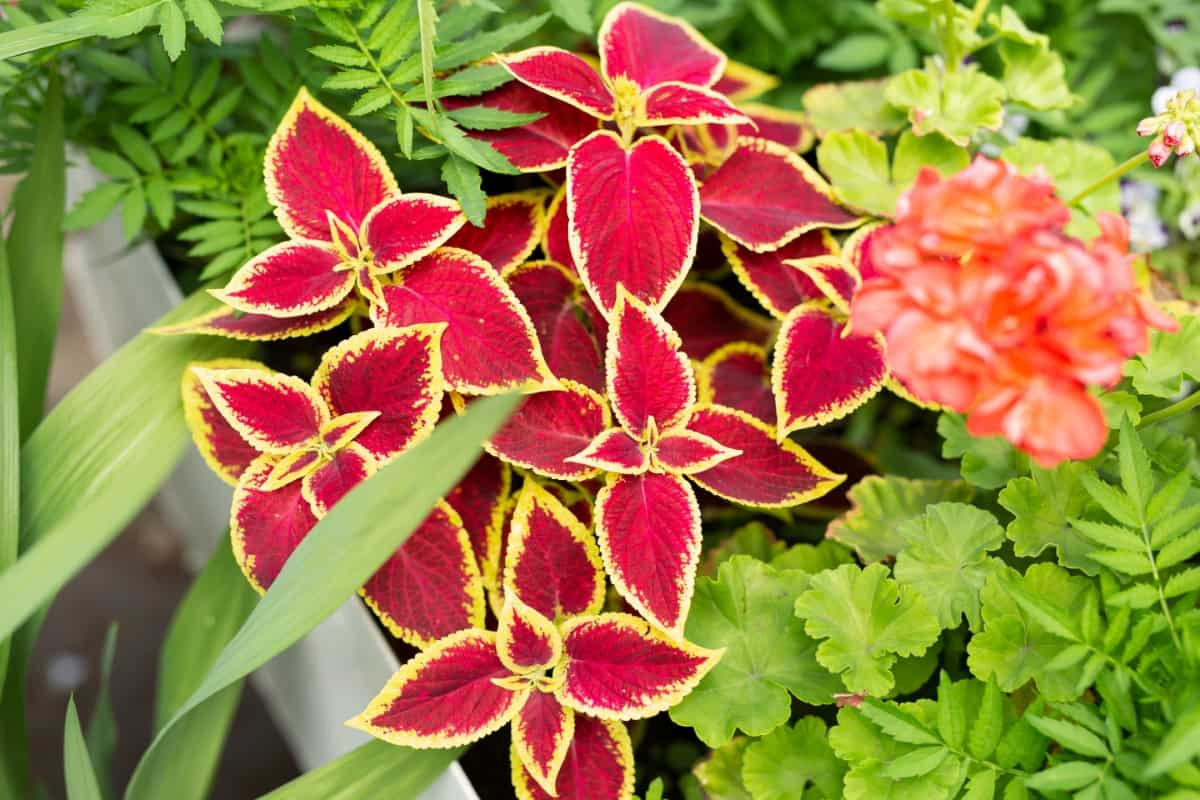
- Selecting Suitable Location:
- Coleus plants thrive in partial shade to full sun, requiring at least four to six hours of sunlight daily.
- Avoid prolonged exposure to strong, direct sunlight to prevent leaf scorching and color fading.
- Soil Preparation:
- Coleus prefer well-draining soil with a pH level between 6 and 7.
- Enhance soil drainage by incorporating organic matter like compost or aged manure to prevent water accumulation around the roots.
- Propagation Methods:
- Coleus can be propagated through cuttings, division, or seeds, offering various options to multiply and share the beauty of these plants.
- Propagation during the active growth period in early spring and summer is ideal for successful root development.
By following these guidelines on location selection, soil preparation, and propagation methods, you can ensure the healthy growth and prosperity of your coleus garden, setting the stage for vibrant and thriving plants.Stay tuned as we delve into the exciting world of coleus propagation, providing you with techniques to multiply and share the beauty of these stunning plants.
Watering Coleus: Finding the Balance between Moisture and Drainage
Coleus plants require a careful balance of moisture and drainage to thrive and reach their full potential. Overwatering can lead to root rot and other fungal diseases, while underwatering can cause the leaves to wilt and the plant to suffer. Finding the right balance is essential for healthy growth.
To ensure proper watering for your coleus plants, consider the following guidelines:
- Moisture Level Check:
- Insert your finger about an inch deep into the soil.
- If it feels dry, it’s time to water.
- If the soil feels moist, hold off on watering to avoid overwatering.
- Deep and Thorough Watering:
- When you water, do so deeply and thoroughly.
- Ensure that the water penetrates the root zone.
- This encourages deeper root growth, making the plant more resilient.
- Avoid Wetting Foliage Excessively:
- Water directly at the base of the plant.
- Excessive wetting of foliage can lead to diseases.
- Consider Factors:
- Soil Type: Choose well-draining soil to prevent waterlogged roots.
- Weather Conditions: Adjust watering based on weather (hot, dry days vs. cooler, rainy days).
- Container Size: Smaller containers may need more frequent watering.
Remember, finding the right balance between moisture and drainage is essential. Regular monitoring and adjustments will help your coleus thrive and contribute to a beautiful garden! 🌿🌸🍃 .
After utilizing the SZHLUX Moisture Meter Water Monitor Soil Hygrometer Sensor, I found it to be a reliable tool for maintaining the health of my plants. Its accurate and quick results allowed me to determine the precise amount of water my plants needed, preventing both over and under-watering. The single probe design proved to be less harmful to roots, easing concerns about soil disturbance during testing. Its ease of use and clear dial made it effortless to obtain readings without the need for batteries.
Additionally, its portability made it suitable for both indoor and outdoor use, catering to the needs of any gardener or houseplant enthusiast. However, it’s worth noting the cautionary tips provided, such as avoiding testing too-hard soil and ensuring to wipe the probe clean after each use to maintain accuracy. Overall, it’s a valuable tool for any gardener’s arsenal, offering convenience and reliability in maintaining optimal plant health.
- Accurate and Reliable: The SZHLUX Moisture Meter provides accurate and quick results, allowing users to determine the exact amount of water their plants need. This helps in avoiding both over and under-watering, which is crucial for plant health.
- Less Harm to Roots: With its single probe design, this moisture meter minimizes harm to plant roots. Users don’t need to worry about digging up the soil after testing, making it convenient and non-disruptive to the plant’s environment.
- Easy to Use: Operating the meter is straightforward – simply insert it into the soil to obtain immediate test results. The large and clear dial makes it easy to read without the need for batteries, enhancing its user-friendliness.
- Exquisite Gardening Gift: This moisture meter makes for an excellent gift for plant lovers. It helps recipients test soil moisture accurately, aiding them in becoming more effective gardeners. This makes it a thoughtful and practical gift option.
- Helpful Tips: The product comes with helpful tips, such as not using it in liquid to avoid damage to the sensing probe, avoiding testing too-hard soil, and wiping it clean after each use to maintain accuracy.
- Limited Use: The moisture meter is not suitable for testing liquid, which restricts its application to soil moisture measurement only. Users should be cautious not to use it in environments where liquid is present.
- Soil Hardness Limitation: It’s not recommended to use the meter on too-hard soil, which may limit its effectiveness in certain soil conditions. Users should be aware of this limitation when using the device.
- Maintenance Required: To ensure accurate readings, users need to wipe the probe clean after each use. Failure to do so may affect the accuracy of subsequent tests, requiring regular maintenance.
- Accuracy Concerns: While the product generally receives positive reviews for accuracy, some users may experience discrepancies in readings over time. This could be due to factors such as environmental conditions or sensor wear.
- Durability: There are occasional reports of the device malfunctioning or ceasing to function after a relatively short period of use. This suggests potential durability issues that users should consider before purchasing.
Fertilizing Coleus: Nourishing Your Plants for Optimal Growth
Proper fertilization is essential for the optimal growth and development of your coleus plants. By providing them with the necessary nutrients, you can ensure that they thrive and display their vibrant foliage to their fullest potential.
- Nutrient Requirements:
- Primary nutrients for healthy coleus growth include nitrogen, phosphorus, and potassium, each serving specific functions like chlorophyll production, root development, and flower formation.
- Fertilization Recommendations:
- Use a balanced, slow-release fertilizer to provide consistent nourishment over time, applying it every four to six weeks during the growing season.
- Different types of fertilizers like liquid, granular, organic, and water-soluble have varying application frequencies and rates to meet coleus’ nutrient needs effectively.
- Monitoring and Adjustments:
- Regular soil testing is essential to prevent over-fertilization and nutrient imbalances that can harm coleus plants[5].
- Adjusting the fertilization regimen based on soil nutrient levels ensures optimal growth and vibrant foliage display for coleus plants.
The following table explains about the fertilizing coleus:
| Fertilizer Type | Application Frequency | Application Rate |
|---|---|---|
| 1. Balanced Liquid Fertilizer (10-10-10) | Every 2-4 weeks | Dilute 1 tablespoon per gallon of water |
| 2. Slow-Release Granular Fertilizer (14-14-14) | Once every 2-3 months | Apply 1 tablespoon per plant |
| 3. Organic Fertilizer (5-5-5) | Every 4-6 weeks | Apply 2 tablespoons per plant |
| 4. Water-Soluble Fertilizer (20-20-20) | Every 1-2 weeks | Dilute 1 teaspoon per gallon of water |
By following these guidelines on nutrient requirements, proper fertilization techniques, and monitoring soil nutrient levels, you can promote the healthy growth and stunning appearance of your coleus garden.
Pruning and Pinching Coleus: Enhancing Shape and Fullness
Pruning and pinching coleus plants are essential techniques for maintaining their shape and enhancing their fullness. By selectively removing certain branches and stems, gardeners can promote bushier growth and prevent leggy or spindly plants. Pruning also helps to maintain the desired size and form, whether you’re growing coleus in containers or in the ground.

Start Early: Begin when your coleus has at least four sets of leaves.
Pinch off the tips of young plants using your fingers or sharp pruning shears.
This encourages multiple side shoots to form, resulting in a fuller, compact plant with abundant foliage.
As your coleus grows, maintain its shape:
Remove Dead/Damaged Foliage: Promotes air circulation and prevents disease spread.
Trim Longer or Unruly Stems: Maintain a pleasing shape and prevent overcrowding.
Avoid Top-Heavy Growth: Prevents straggly appearance.
Selective Pruning: Focus on areas that need attention.
Coleus is forgiving with pruning.
Avoid Excessive Pruning: Stress can inhibit growth.
Monitor Growth: Adjust pruning frequency as needed.
By following these pruning and pinching techniques, you can help your coleus plants thrive and ensure they stay vibrant and beautiful throughout the growing season.Keep your coleus thriving, and enjoy the vibrant beauty it brings to your garden! 🌿🌸🍃 .
Managing Pests and Diseases: Protecting Your Coleus Plants
Coleus plants are known for their vibrant and striking foliage, but just like any other plant, they can fall victim to pests and diseases. The health and vitality of your coleus garden depend on effective management techniques to prevent and treat these issues.Let’s delve into the common pests and diseases that can affect Coleus plants, along with their symptoms, treatments, and effects:
| Issue | Symptoms | Treatment | Effect on Plant Health |
|---|---|---|---|
| Powdery Mildew | – White powdery coating on leaves, stems, and flowers. | – Adequate spacing, good air circulation. – Prune infected parts. – Apply fungicide if needed. | – Can cause leaf drop and affect overall appearance. |
| Fusarium Wilt | – Wilting, yellowing leaves, followed by plant death. | – Practice crop rotation. – Avoid overwatering. – Remove infected plants. | – Can lead to complete plant loss. |
| Leaf Spot | – Small, dark-colored spots on leaves. | – Remove infected leaves. – Apply fungicide if severe. | – Affects aesthetics but may not significantly harm overall health. |
| Mealybugs | – White fuzz resembling cotton on leaves. | – Treat with soapy water or insecticidal soap. | – Can cause leaf damage and weaken the plant. |
| Spider Mites | – Fine webbing on leaves, yellowing, and stippling. | – Spray with water to dislodge mites. – Use insecticidal soap or neem oil. | – Can stunt growth and reduce vigor. |
| Aphids | – Clusters of tiny insects on leaves, causing distortion and yellowing. | – Spray with water to dislodge aphids. – Use insecticidal soap or neem oil. | – Can weaken the plant and transmit viruses. |
| Slugs | – Irregular holes in leaves, slime trails on soil. | – Handpick slugs. – Set up beer traps. | – Can cause cosmetic damage but rarely fatal. |
By staying vigilant and implementing proactive measures, you can effectively manage pests and diseases in your coleus garden, ensuring the continued health and beauty of your plants. Regular monitoring, proper watering techniques, and prompt treatment when necessary will help protect your coleus plants from potential threats and allow them to thrive.
Overwintering Coleus: Strategies for Keeping Your Plants Alive in Cold Climates
Overwintering coleus plants can be a challenge, especially in cold climates where frost and freezing temperatures can damage or even kill these tropical plants. However, with the right strategies and precautions, you can successfully protect your coleus during the winter months and ensure their survival for the next growing season.
Bringing Them Indoors as Houseplants:
- Select a location with ample sunlight and a temperature between 60-75°F (15-24°C).
- Avoid drafts and heating vents to prevent temperature fluctuations and drying out of the foliage.
- Maintain humidity by using a tray of water or a humidifier.
- Check for pests before bringing them indoors and treat if necessary to prevent infestation.
Storing Them Dormant:
- Before the first frost, dig up the plants, preserving the root system.
- Trim back the foliage to 2-3 inches above the soil to reduce moisture loss.
- Shake off excess soil and place the plants in a container with peat moss or vermiculite.
- Store in a cool, dark location above freezing but below 50°F (10°C).
- Regularly check for signs of rot or dehydration and adjust storage conditions as needed.
By implementing these strategies, you can successfully overwinter your coleus plants and enjoy their vibrant foliage for years to come. With proper care and attention, your coleus will thrive even in the coldest of climates, bringing beauty and color to your garden season after season.
Companion Planting with Coleus: Maximizing Beauty and Functionality
Companion planting is a gardening practice that involves strategically placing different plants together to maximize their beauty and functionality. When it comes to coleus, this versatile and vibrant plant can be paired with a variety of other plants to create stunning and harmonious gardens.
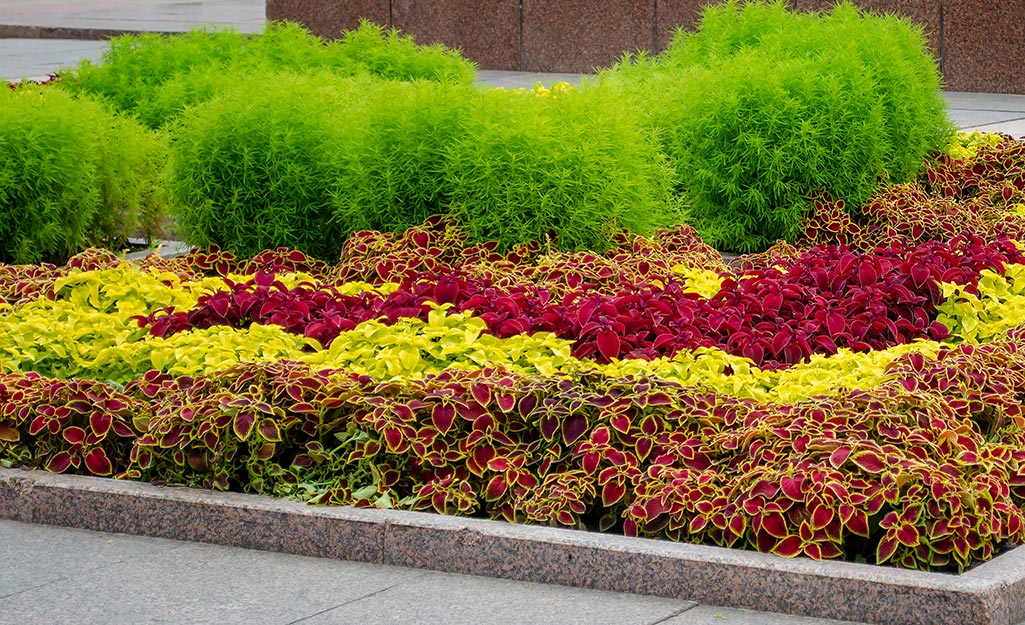
- Tomatoes:
- Functionality: Natural pest repellent.
- Quantitative Impact: Plant 1 coleus per 2 tomato plants.
- Details: Coleus emits a strong scent that deters pests, protecting your tomatoes.
- Basil:
- Functionality: Enhances flavor and deters pests.
- Quantitative Impact: Interplant basil with coleus for aesthetics.
- Details: Basil complements coleus visually and helps keep pests away from both plants.
- Petunias:
- Functionality: Attracts pollinators.
- Quantitative Impact: Plant 1 coleus per 3 petunia plants.
- Details: Petunias and coleus together create a vibrant display and invite bees and butterflies.
- Marigolds:
- Functionality: Repels pests and adds color.
- Quantitative Impact: Plant marigolds around coleus as borders.
- Details: Marigolds release natural compounds that deter pests, benefiting nearby plants.
- Nasturtiums:
- Functionality: Deters pests and attracts beneficial insects.
- Quantitative Impact: Interplant nasturtiums with coleus.
- Details: Nasturtiums act as a sacrificial plant, luring pests away from coleus.
By strategically combining coleus with these companion plants, you’ll create a beautiful and functional garden. Enjoy the benefits of aesthetics, pest control, and pollinator attraction! 🌿🌸🍃 .
Overall, companion planting with coleus is a great way to enhance the beauty and functionality of your garden. Whether you’re looking to create an eye-catching floral display or promote a healthy and balanced ecosystem, incorporating coleus into your garden design is sure to bring joy and success to your gardening endeavors.
Designing with Coleus: Creative Ideas for Incorporating Coleus into Your Garden
Coleus plants are versatile and colorful additions to any garden, offering a wide range of options for creative design. Here are some ideas for incorporating Coleus into your garden:

Container Gardens:
- Create stunning container gardens by mixing different varieties of Coleus with complementary plants like sweet potato vine, calibrachoa, or petunias.
- Play with different heights and textures to add visual interest to your containers.
Borders and Edging:
- Use Coleus plants as borders or edging along pathways or flower beds to add a pop of color and define spaces.
- Mix and match different Coleus varieties to create a vibrant and dynamic border.
Focal Points:
- Plant a large, colorful Coleus variety in a prominent spot in your garden to serve as a focal point and anchor the design.
- Surround the focal Coleus plant with smaller, contrasting plants to enhance its impact.
Patterns and Designs:
- Experiment with creating patterns or designs using different colored Coleus plants in a specific area of your garden.
- Consider geometric shapes, swirls, or even a checkerboard pattern for a unique and eye-catching display.
Vertical Gardens:
- Incorporate Coleus into vertical gardens by planting them in hanging baskets, wall planters, or trellises.
- Mix trailing varieties with upright ones for a cascading effect that adds depth to your vertical garden.
Seasonal Displays:
- Use Coleus plants in seasonal displays by pairing them with seasonal flowers or foliage plants that complement their colors.
- Switch out Coleus varieties based on the season to keep your garden looking fresh and vibrant year-round.
By incorporating these creative ideas, you can make the most of Coleus plants in your garden and create a visually stunning and dynamic outdoor space.
Harvesting Coleus Seeds: Saving and Sharing the Beauty
As a fellow gardener, I share your enthusiasm for preserving the beauty of coleus plants through seed harvesting. Let’s dive into the process and essential tips for successful coleus seed collection:
- Timing Matters:
- Allow the flower spikes to fully mature on your coleus plants.
- Look for small, dried capsules that develop after flowering.
- These capsules house the precious brown seeds.
- Gentle Harvesting:
- Pluck the capsules gently from the plant.
- Handle them with care to avoid damaging the seeds.
- Choose the Right Container:
- Opt for a paper bag instead of plastic.
- Paper bags allow proper air circulation and prevent moisture buildup.
- Label the bag with the variety name and collection date.
- Why Paper Bags?:
- Airflow: Paper bags allow air to circulate, preventing mold or rot.
- Moisture Control: Unlike plastic, paper absorbs excess moisture.
- Eco-Friendly: Environmentally conscious choice.
- Sharing the Joy:
- Accurate labeling helps you track your seeds.
- When sharing with fellow gardeners, you can provide specific variety information.
Remember, each seed holds the promise of a future coleus plant. Happy collecting, and may your garden continue to flourish! 🌿🌱🌸.
It’s important to use a paper bag instead of plastic, as it allows for proper air circulation and prevents moisture buildup that could lead to mold or rot. Remember to label the bag with the variety name and the date of collection. This will not only help you keep track of your seeds but also make it easier to share them with others, as you can provide accurate information about the coleus variety.
Troubleshooting Common Coleus Problems: Solutions for a Healthy Garden
Coleus plants are generally easy to grow, but they can sometimes face common issues that may affect their health. Here are some troubleshooting tips and solutions for common Coleus problems to help maintain a healthy garden:
Yellowing Leaves:
- Cause: Overwatering or underwatering, nutrient deficiencies, or too much direct sunlight.
- Solution: Adjust your watering schedule to keep the soil consistently moist but not waterlogged. Feed with a balanced fertilizer to address nutrient deficiencies. Move the plant to a location with filtered sunlight if it’s receiving too much direct sun.
Leggy Growth:
- Cause: Insufficient light or overcrowding.
- Solution: Place the Coleus in a brighter location with indirect sunlight. Prune back leggy growth to encourage bushier growth. If overcrowding is the issue, consider transplanting to a larger container or spacing plants out in the garden.
Pests:
- Common Pests: Aphids, spider mites, and whiteflies.
- Solution: Use insecticidal soap or neem oil to control pests. Regularly inspect the plants for signs of infestation and treat promptly. Consider introducing beneficial insects like ladybugs to help control pest populations naturally.
Fungal Diseases:
- Common Diseases: Powdery mildew and root rot.
- Solution: Ensure good air circulation around the plants to prevent fungal diseases. Avoid overhead watering to reduce humidity levels. Treat with fungicides if necessary, following the instructions carefully.
Wilting:
- Cause: Underwatering, root bound plants, or high temperatures.
- Solution: Check the soil moisture regularly and water when the top inch feels dry. Repot root-bound plants into larger containers. Provide shade during hot periods to prevent wilting.
Leaf Drop:
- Cause: Stress from environmental changes, overwatering, or underwatering.
- Solution: Maintain consistent watering practices and avoid drastic changes in light or temperature. Ensure proper drainage to prevent waterlogged soil. Prune back any damaged or stressed foliage.
By addressing these common Coleus problems promptly and implementing the suggested solutions, you can help your plants thrive and maintain a healthy garden filled with vibrant and colorful Coleus plants.
Watch video for more information:
FAQ
What is the ideal temperature for growing coleus plants?
Coleus plants thrive in temperatures between 65°F and 75°F (18°C and 24°C).
How often should I water my coleus plants?
Coleus plants prefer evenly moist soil. Water them deeply when the top inch of soil feels dry to the touch.
Can coleus plants tolerate full sun?
While coleus can tolerate some direct sunlight, they generally prefer partial shade or filtered sunlight to prevent leaf scorching.
Why are the leaves of my coleus plant turning yellow?
Yellow leaves on a coleus plant can be a sign of overwatering, underwatering, nutrient deficiencies, or pests. Assess the watering and feeding routine, and check for signs of pests.
How can I prevent my coleus plants from becoming leggy?
To prevent leggy growth, pinch back the tips of the stems regularly. This will encourage bushier and more compact growth.
Are coleus plants toxic to pets?
Yes, coleus plants are toxic to cats and dogs if ingested. Keep them out of reach of your pets or consider alternative pet-friendly plants.
How do I protect my coleus plants from common pests?
To manage common pests like aphids and spider mites, regularly inspect your plants and apply appropriate organic insecticides or insecticidal soaps if necessary.
Can I grow coleus indoors?
Yes, coleus can be grown indoors as long as they receive bright, indirect light. Keep them away from cold drafts and maintain a consistent temperature.
How can I overwinter my coleus plants in cold climates?
Before the first frost, dig up the coleus plants and pot them, then bring them indoors to a cool, bright location. Reduce watering and provide occasional misting to maintain humidity.
Can coleus plants be grown as perennials?
In areas with mild winters, coleus plants can be grown as perennials. However, in colder regions, they are typically grown as annuals or overwintered indoors.
Can I save coleus seeds for future planting?
Yes, coleus seeds can be saved for future planting. Allow the flowers to fully develop and go to seed, then collect the seeds and store them in a cool, dry place.
Are there any specific companion plants that pair well with coleus?
Yes, coleus can be paired with other shade-loving plants like impatiens, ferns, and begonias. They also make great companions for taller plants that provide some shade.
Can I use coleus plants in flower arrangements?
Yes, coleus plants can be used in flower arrangements due to their vibrant foliage. However, they do not produce long-lasting cut flowers, so they are best used as accents or fillers in arrangements.
How often should I fertilize my coleus plants?
Fertilize coleus plants every 4-6 weeks during the growing season with a balanced, water-soluble fertilizer. Follow the instructions on the fertilizer package for proper application.
What should I do if my coleus plants show signs of disease?
If your coleus plants show signs of disease, such as leaf spots or wilting, it is important to identify the specific disease and treat it accordingly. Consult a local garden center or extension service for appropriate remedies.

Studied Agricultural Engineering-Plant Protection at University of California, Davis.
Head of Content writing team at Southelmontehydroponics.com

